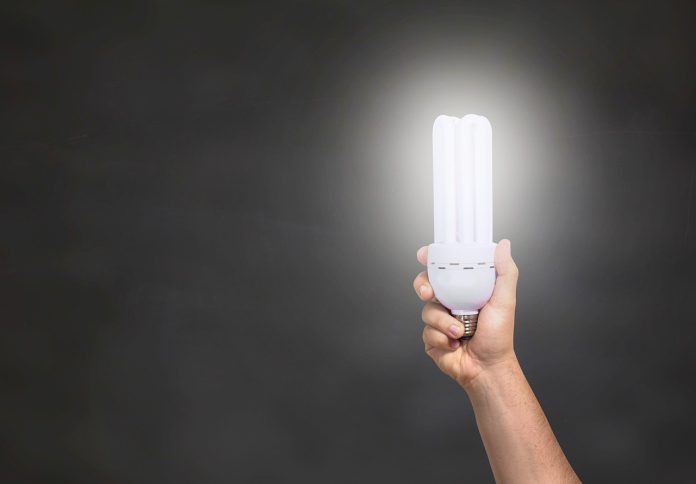Emergency lighting has evolved from simple halogen bulbs to advanced LED systems, improving safety, efficiency, and functionality. This blog explores the journey of emergency lighting, highlighting why LEDs are now the gold standard and what the future may bring.
A Brief History of Emergency Lights
Emergency lighting has always played a critical role in safeguarding lives during crises. While their design and purpose have remained consistent—to provide illumination during emergencies such as power outages, fires, or evacuations—the technology powering these systems has undergone a dramatic transformation.
The Era of Halogen Lights
Halogen lights were among the earliest technologies used for emergency lighting. Introduced in the 1960s, halogen bulbs were essentially an advanced version of traditional incandescent bulbs. They contained a small amount of halogen gas, which allowed them to produce brighter and more consistent light.
Advantages of Halogen Lighting:
- Brighter than incandescent bulbs.
- Relatively low initial cost.
However, halogen lights came with significant drawbacks, particularly for emergency applications:
- High Energy Consumption: Halogen bulbs consumed a significant amount of electricity.
- Heat Generation: They produced a lot of heat, posing safety risks and reducing energy efficiency.
- Shorter Lifespan: Halogen bulbs needed frequent replacements, increasing maintenance costs.
Despite their limitations, halogen lights were widely used until a more energy-efficient solution emerged.
Enter Fluorescent Lighting
The 1980s witnessed the rise of fluorescent lighting in emergency systems. Fluorescent lights were more energy-efficient and had a longer lifespan compared to halogen bulbs.
Key Benefits:
- Reduced energy consumption.
- Improved durability and lifespan.
- Moderately brighter light output.
Challenges with Fluorescents:
Fluorescent lights relied on toxic materials like mercury, which posed environmental and health hazards. Additionally, their light flickered and took time to warm up, which was not ideal during emergencies when instant illumination was crucial.
Fluorescent lighting was a step forward but still left much to be desired in terms of safety, efficiency, and reliability.
The Shift Toward LED Technology
The late 1990s and early 2000s marked the dawn of LED (Light-Emitting Diode) technology, a game-changer for emergency lighting. Initially used for small indicator lights, LEDs quickly became the preferred choice for both consumer and industrial applications after significant advancements made them more efficient and cost-effective.
Why LEDs Outsmart Traditional Lighting
LEDs represent a revolutionary leap in lighting technology. They resolve many of the issues associated with halogen and fluorescent lighting systems.
1. Energy Efficiency
LEDs consume up to 90% less energy than traditional lighting systems like halogen or fluorescent bulbs. This not only makes them cost-effective but also guarantees longer backup times during emergencies when they’re powered by battery systems.
2. Exceptional Lifespan
LEDs can last up to 50,000 hours, significantly outlasting halogen and fluorescent bulbs. Their long lifespan reduces maintenance frequency and associated costs, making them an economically wise choice.
3. Instant Illumination
Unlike fluorescents, LEDs emit full brightness instantaneously. This is crucial in emergencies where every second counts.
4. Compact and Durable Design
LEDs are compact but can emit light of high intensity. Additionally, they’re highly durable, resistant to shocks, and capable of withstanding harsh environmental conditions.
5. Environmental Friendliness
LEDs are free from toxic substances like mercury and are fully recyclable, making them an environmentally sustainable choice.
Applications of LED Emergency Lights
LED technology has broadened the scope of applications for emergency lights. Here are just a few examples:
- Exit Signs: Highly visible, long-lasting LED exit signs guide occupants during evacuations.
- Pathway Lighting: LEDs ensure that pathways, stairs, and corridors remain illuminated during power cuts, reducing tripping hazards.
- Emergency Vehicles: Modern LED emergency lights on ambulances, police sirens, and fire trucks offer exceptional visibility from long distances.
- Industrial and Commercial Sectors: LED-based emergency lighting is now a standard feature in factories, offices, hotels, and malls.
How LEDs Are Transforming Emergency Safety
The evolution to LEDs has redefined emergency lighting systems in several key ways:
Enhanced Visibility During Emergencies
LED lights produce a bright, clear light that mimics daylight. This improves visibility during evacuations or rescue operations, even in poorly lit or obstructed environments.
Boosting Energy Independence
Many LED emergency lights are now coupled with renewable energy sources like solar panels. This combination ensures that lights remain operational during extended crises, further enhancing energy resilience and disaster preparedness.
Smart Integration
Modern LED emergency lights integrate seamlessly with smart building systems. They can be remotely monitored, tested, and controlled, allowing facilities managers to ensure their operational readiness at all times.
Challenges and Future Trends
While LEDs have become the industry standard, there are still challenges to address. Initial installation costs can be relatively high, although long-term savings typically offset this. Additionally, as LEDs become more widely adopted, the focus will likely shift to enhancing their integration with other smart systems and better preparing them for increasingly complex emergencies.
Looking ahead, innovations such as IoT (Internet of Things) connectivity and AI-driven maintenance predictions may further refine emergency lighting systems. Advances in battery technology and renewable energy will also broaden their capabilities and sustainability.
Key Takeaways for Businesses and Organizations
If you haven’t already upgraded to LED emergency lighting, now is the time. Their energy efficiency, longevity, and adaptability make them the superior choice for safeguarding people and property during emergencies. Consider consulting with professionals to install or upgrade your emergency lighting systems to incorporate LED technology.
Conclusion
Whether you’re a business owner, facility manager, or safety officer, investing in LED emergency lighting is no longer optional. It’s a crucial step toward ensuring safety, streamlining operations, and aligning with modern energy standards.
